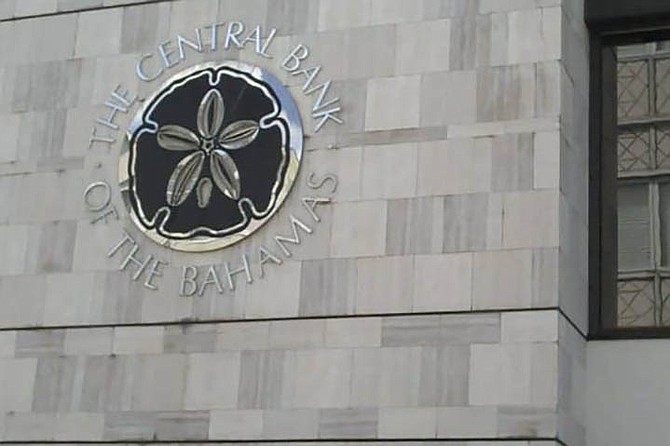By NEIL HARTNELL
Tribune Business Editor
nhartnell@tribunemedia.net
Large Nassau/Paradise Island hotels endured a “tepid” October in the wake of Hurricane Dorian with revenues falling on the back of a ten percent decline in room nights sold.
The Central Bank, unveiling its October monthly economic report, revealed that the Category Five storm’s impact on demand for The Bahamas resulted in a five percent room revenue fall for the major New Providence resorts that month despite a near six percent rise in room rates.
“Developments within the hotel market were also tepid for October,” the Central Bank said. “Information from The Bahamas Hotel & Tourism Association (BHTA) and the Ministry of Tourism, which covers a sample of large hotels in New Providence and Paradise Island, showed a five percent fall-off in room revenue during the month despite the 5.9 percent increase in the average daily room rate (ADR) to $190.39. This was due to a ten percent decline in room nights sold, with the occupancy rate lower by 4.8 percentage points.”
However, the report reaffirmed the Central Bank’s prior confidence that tourism’s 2019 first half gains had already been largely locked in prior to Dorian’s arrival. For the October declines had seemingly done little to dent the double-digit growth in many performance indicators for the Nassau/Paradise Island hotel industry during the first ten months of the year.
“Room revenue expanded by 24 percent during the ten months to October, amid respective gains in room nights sold and the ADR of 21 percent and 8.2 percent, while the average occupancy rate rose by 7.1 percentage points to 68.7 percent,” the Central Bank added.
Noting that tourism was “performing under potential” in Dorian’s aftermath, the regulator said: “In terms of traffic through the country’s gateway airport, data from the Nassau Airport Development Company (NAD) revealed a recovery in departures vis-à-vis September’s contraction, with a 1.7 percent growth year-over-year in October, but this was markedly lower than the 19.1 percent expansion during the same period in 2018.
“In particular, the US component grew by 2.6 percent, significantly lower than the 17.2 percent growth in the prior year. However, the non-US international segment contracted by 3.7 percent, contrasting with a 31.6 percent increase a year ago.
Much of Dorian’s economic fall-out was still working its way through the Bahamian economic system during October, with the full effects likely to be felt in 2020. Turning to vacation rentals, the Central Bank said: “Total available listings firmed by 8.9 percent relative to October 2018 amid growth in the Exuma and New Providence markets, which partly compensated for the declines in Grand Bahama and Abaco.
“Likewise, with higher engagements in New Providence and Exuma, total booked listings rose by 32.1 percent when compared to last year. Against this backdrop, the average daily room rate (ADR) for entire place listings gained 1.3 percent to $351.27, although the hotel comparable rate fell by 0.5 percent to $148.25.
“Over the ten-month period, available off-resort listings expanded by 16.3 percent, reflecting gains in entire place and private room offerings. Similarly, bookings grew by 31.7 percent relative to 2018. However, the ADR for both hotel comparable accommodations and entire place listings were lower by 6.6 percent and 2 percent, respectively.”
In preparation for potential Dorian-related loan losses, the Central Bank said Bahamian commercial banks increased their provisions by $28.1m or 6.9 percent during October to bring them to $437.8m. This brought the ratio of provisions to non-performing loans close to 93 percent, as the industry wrote-off a net $9.5m in bad credit.
Ahead of a likely spike in non-performing loans and loan arrears created by Dorian, the Central Bank said there had been consistent, steady improvement in reducing the banking industry’s post 2008-2009 pile of bad credit.
“On a year-on-year basis, the total private sector arrears rate declined by 1.9 percentage points, as the ratio of 31-90 day delinquencies to total private sector loans fell by 1.2 percentage points and the non-performing loan rate eased by 0.8 percentage points,” the Central Bank said.
“Further, by loan type, decreases were recorded for all the categories, with the commercial, mortgages and consumer delinquency rates lower by 3.4, 2.4 and 0.9 percentage points, respectively.”
Looking ahead to the post-Dorian rebuild, the Central Bank added: “Expectations are that the domestic economy will continue to expand at a modest pace during remainder of the year, but may plateau in 2020 before returning to pre-hurricane growth in the subsequent year.
“Activity within New Providence and some of the other major islands is poised to sustain short to medium-term gains within the tourism sector until the country’s inventory is fully restored. Further, construction output will continue to be underpinned by foreign direct investments, with some impetus from rebuilding efforts, as funding, materials and labour are sourced.
“Against this backdrop, any gains in employment are likely to accrue in the construction sector, with more broad-based improvements anticipated as work progresses with the restoration of damaged hotels and resorts.”





Comments
Use the comment form below to begin a discussion about this content.
Sign in to comment
Or login with:
OpenID